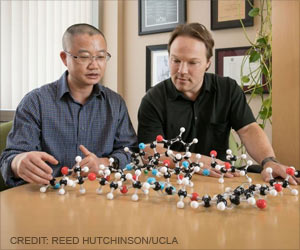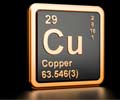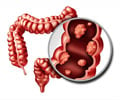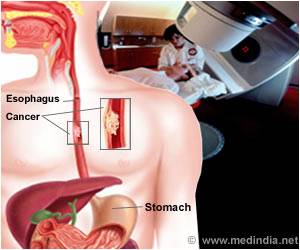Cancer cells need more copper for cell growth. A new method uses a nanofiber system to remove copper, triggering oxidative stress and cell death.

Chaperone-Derived Copper(I)-Binding Peptide Nanofibers Disrupt Copper Homeostasis in Cancer Cells
Go to source).
Why Cancer Cells Need Copper?
Copper is an essential cofactor for many enzymes which is involved in the growth and development of cells. High concentrations of copper can be toxic to the body, however, at appropriate levels, it is involved in antioxidant defense and other functions.Extracellular, doubly charged copper ions are reduced to singly charged copper, transported into the cell, stored in pools, and transferred to the biomolecules that require them on demand. To maintain the cellular copper equilibrium (homeostasis), cells have developed clever trafficking systems that use a variety of transporters, ligands, chaperones (proteins that help other complex proteins to fold correctly), and co-chaperones.
Because cancer cells grow and multiply much more rapidly, they have a significantly higher need for copper ions. Restricting their access to copper ions could be a new therapeutic approach. The problem is that it has so far not been possible to develop drugs that bind copper ions with sufficient affinity to “take them away” from copper-binding biomolecules.
Removing Copper from Tumor Cells
In cooperation with the Stanford University School of Medicine (Stanford/CA, USA) and Goethe University Frankfurt/Main (Germany), Tanja Weil, Director of the Max Planck Institute for Polymer Research (Mainz), and her team have now successfully developed such a system. At the heart of their system are the copper-binding domains of the chaperone Atox1.The team attached a component to this peptide that promotes its uptake into tumor cells. An additional component ensures that the individual peptide molecules aggregate into nanofibers once they are inside the tumor cells. In this form, the fiber surfaces have many copper-binding sites in the right spatial orientation to be able to grasp copper ions from three sides with thiol groups (chelate complex). The affinity of these nanofibers for copper is so high that they also grab onto copper ions in the presence of copper-binding biomolecules.
Advertisement
The research team hopes that some years in the future, these fundamental experiments will perhaps result in the development of useful methods for treating cancer.
- Chaperone-Derived Copper(I)-Binding Peptide Nanofibers Disrupt Copper Homeostasis in Cancer Cells - (https://onlinelibrary.wiley.com/doi/10.1002/anie.202412477)
Source-Eurekalert















